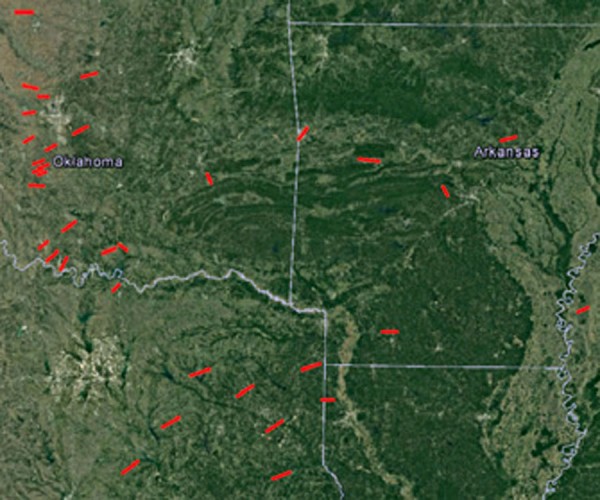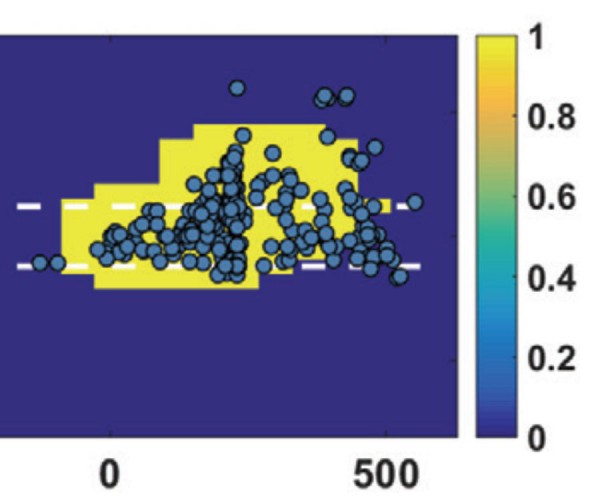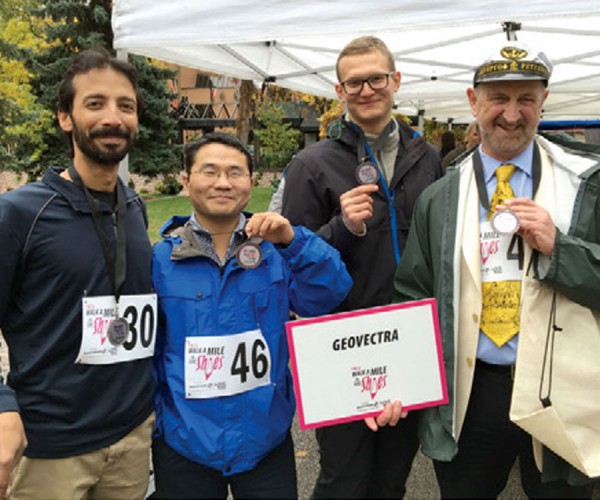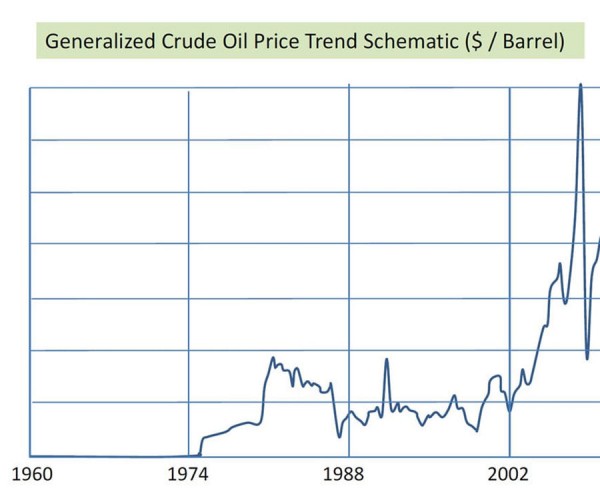Articles

Determination of the Stress State – An Additional Benefit of Background Seismicity Monitoring
Zuzana Jechumtálová and Dawid Szafrański
What is the benefit of background seismicity monitoring and how long it should be carried out before subsurface injection? This is a typical question an operator may ask when considering the start of a geothermal, salt water disposal or hydraulic stimulation injection. The usual duration estimate is at least one…

Interpreting Microseismic Data from Hydraulic Fracturing: Understanding Subsurface Deformation Through Numerical Modeling
Neda Boroumand and David Eaton
This article is a summary of the results presented in the PhD Thesis written by Boroumand (2016). The developments made in the research sought to find an answer to the question “why and how did the hydraulic fracture(s) grow in a particular direction?” It makes specific use of microseismic observations…

Beyond the Microseismic Clouds: A Comprehensive Approach to Unconventional Gas Development
Jason Hendrick, Adam Baig, Eric von Lunen, and Ted Urbancic
The development of shale and tight sand resource plays over the past decade has dramatically changed the oil and gas industry. Advances in hydraulic fracturing technologies have unlocked vast unconventional hydrocarbon resources. Unfortunately, the vast supply (together with other external factors) has led to a price collapse that has plunged…

CSEG 2017/2018 Executive Election
Summary of candidates for the 2017/2018 CSEG Executive election.
...
GeoVectra
The GeoVectra Team
This article has evolved from its original idea quite substantially. At first we were planning to do an interview with GeoVectra president Mike Hall, and then we decided to show the story of one successful company during the downturn. When we started writing it, we started to think about the…

Time-Lapse Survey Repeatability: An Elastic Modeling Study
David C. Henley, Joe Wong, and Peter M. Manning
Remote monitoring of fluid movement in a subsurface formation is an important application for seismic reflection imaging. In this setting, it is important that seismic data be acquired and processed in a repeatable fashion in order to reliably detect image differences due solely to the formation fluid changes. One way…

The Value Added Role of Geophysics in the Canadian Oil and Gas Industry
From the Chief Geophysicists Forum
The role of geophysics in the industry is a robustly debated subject these days. As our industry continues to evolve in order to meet challenges brought on by unconventional resources, changing supply and demand factors, environmental drivers, and legislative and tax regime changes – just to name a few –…

Integrating Data – How Geophysicists and Engineers Can Work Together to Improve Hydraulic Fracturing
Dr. Jennifer L. Miskimins
The integration of disciplines and data is often discussed, occasionally implemented, and rarely as successful as it can or should be. However, failure to accomplish such integration often leads to development missteps and reserves left in the ground. Hydraulic fracturing is one of those areas where multidisciplinary integration is not…

Introduction to October Focus: CREWES Research
Kristopher Innanen
This issue of the RECORDER features contributions from four senior graduate students working with the research group CREWES in the Department of Geoscience at the University of Calgary. These researchers present short summaries of their recent progress towards a better understanding of how seismic waves interact with geological structures, and…

What Should Multicomponent Near-Surface Corrections Look Like in a World of Waveforms?: A raypath-consistent solution for converted-wave processing
Raul Cova, David Henley, Xiucheng Wei and Kristopher A. Innanen
Removal of near-surface effects from elastic data, particularly converted waves, is a well-known and difficult problem, whose difficulty only increases on the backdrop of the trend in our field towards treating seismic wiggles as full waveforms. If we want to eventually apply some type of full waveform inversion or fitting,…

Interbed Multiple Prediction on Land: Which Technology, and Which Domain?
Jian Sun and Kristopher A. Innanen
Prediction and removal of internal or interbed multiples is an increasingly high priority problem in seismic data analysis. One reason for the growth of its role and importance comes from the increased sensitivity with which primary amplitudes in quantitative interpretation are now analyzed. But the importance of accurate and robust…

Reflections from Contrasts in Isotropic Attenuative Media AVO and Beyond
Shahpoor Moradi and Kristopher A. Innanen
The purpose of this article is to summarize and illustrate some features of new theory describing the interaction of seismic waves with viscoelastic structures and interfaces. Progress in these areas makes available more sophisticated tools for AVO analysis and inversion, and thereby quantitative interpretation, and for multi parameter full waveform…

A Summary of Several Challenges Facing Multi-Parameter Elastic Full Waveform Inversion
Wenyong Pan and Kristopher A. Innanen
In spite of all that there is still to learn about seismic full waveform inversion (FWI), and there is a lot, the technology has accumulated some significant success stories in recent years – enough to motivate researchers to think quite ambitiously about how far we might go with it. Moreover,…

Mental Casualties of a Down-turned Market
Amanda Knowles
Aaron sighed, “I lost my job in December and I can’t find anything else.” His statement hung in the air for what seemed like an eternity. I struggled to find the right words to say. How could I help? What could I possibly do? My company wasn’t hiring and I…

Support Services Available for Those Facing Mental Health Challenges
Rob Holt
In any given year, at least one in five people in Canada experience a mental health problem or illness, and most of us know someone who has faced a mental health challenge or concern. Mental illness does not discriminate based on age, gender, religion or race. Mental illness can be…

Introduction to September Focus: Innovation in Land Seismic
Allan R Châtenay and Paul Thacker
Throughout the history of reflection seismic data acquisition there has been a continuous increase in the acquired field trace density as new acquisition and processing technologies have emerged. As a consequence, the E&P industry has seen consistent improvements in final seismic data quality. In this month’s RECORDER Focus section, we…

Deriving High Quality Horizontal Positioning of Seismic Receivers Directly from GPS Receivers Embedded in Wireless Seismic Receiver Nodes
Allan R Châtenay and Paul Thacker
Our work demonstrates that positional data derived from the GPS receivers embedded in wireless seismic receiver nodes can achieve horizontal positioning quality which complies with the minimum standard required for most land-based seismic data acquisition operations. While the original purpose of the GPS receivers within seismic receiver nodes was to…

Technology Collaboration is the Key Element in Frontier Seismic Exploration
Jason Criss
Seismic exploration has long been done in remote, out of the way regions of the globe. However, a definition for frontier area is not a region which is necessarily remote but one that has had limited exploration. This can mean anything from distant jungles to Arctic forests, but a common…

Field Testing Justifying Significant Changes in 3D Design Parameters to Improve Seismic Data and Decrease Costs
Ann O’Byrne, Greg MacNeil and Andrew Kura
Challenging the status quo to optimize 3D acquisition has been a focus of the Foster Creek team since late 2014 when Cenovus initiated a pilot project to decrease the cost of acquiring 3D seismic data. The challenge was to decrease acquisition costs while maintaining data quality and safety standards.
...
It’s Time to Wake Up!
Doug Pruden
I want to proclaim to the Canadian oil industry that the pity party is now officially over and it is time to get up and get back to work.
...








